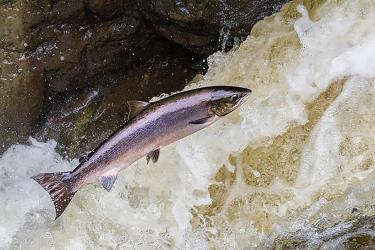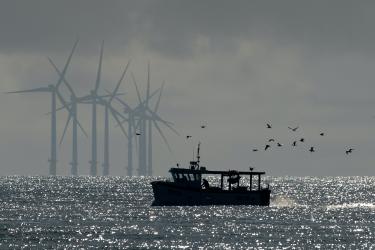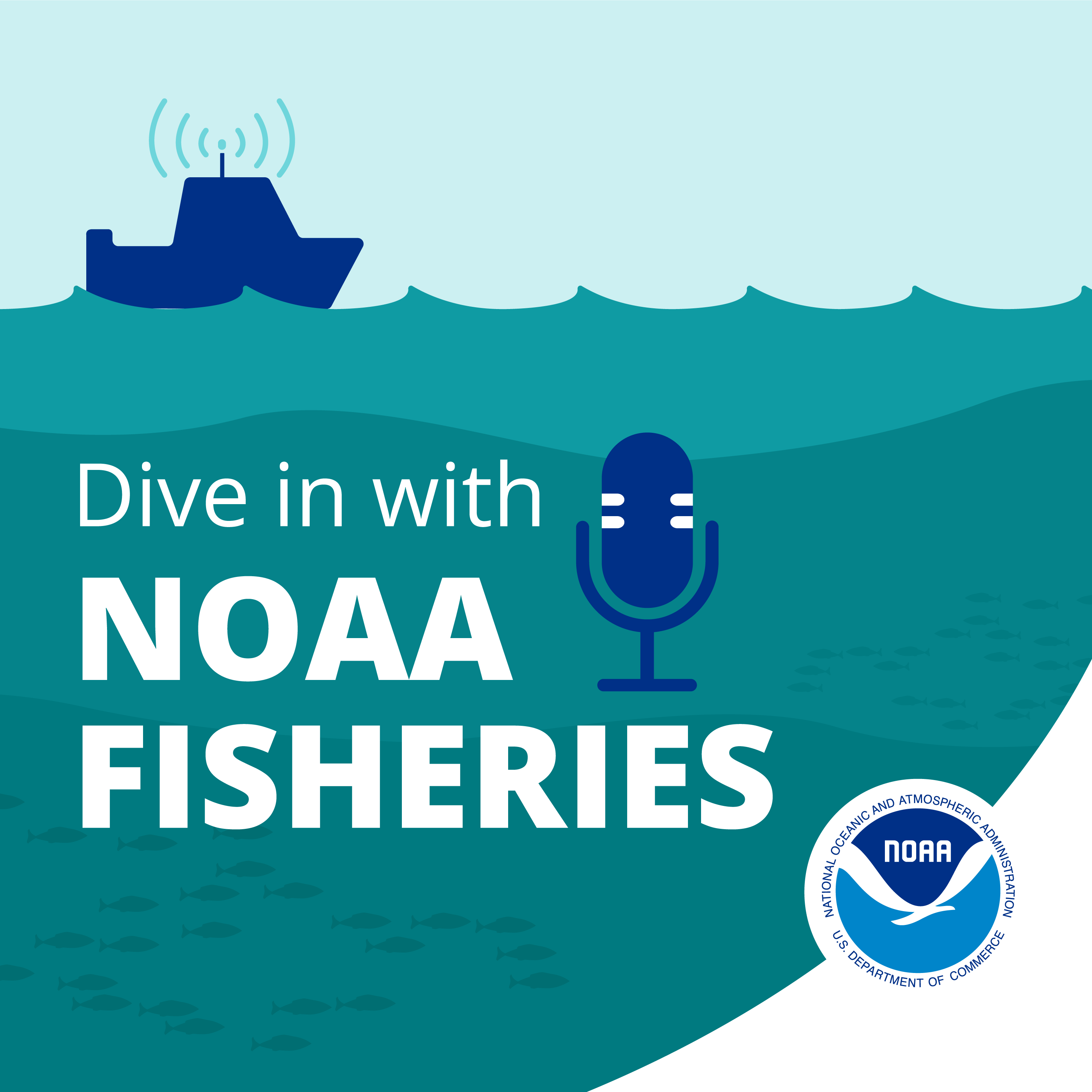Summer News Roundup
[music]
0:00:01.3 John Sheehan: This is Dive In With NOAA Fisheries. I'm John Sheehan, back with another seasonal round-up of news, updates, and happenings from around the agency. July is habitat month at NOAA Fisheries, wherein we highlight our conservation work and the work of partners, showing the importance of healthy coastal habitats. This year's theme is "Habitat For All" and focuses on projects and partnerships supported by funding under the Bipartisan Infrastructure Law and Inflation Reduction Act. Some of these, we've highlighted on the podcast before. In fact, just the other week, we brought you the story of two organizations restoring wetlands in New Orleans, specifically the Bayou Bienvenue in the Lower Ninth Ward. It's a great example of how meaningful and impactful habitat change can be for the communities that rely on them.
0:00:48.5 JS: NOAA is recommending nearly $220 million in funding for 32 transformational habitat restoration and coastal resilience projects this year, and an additional 66 million in funding in future years. Some projects will build on work that's been happening, such as continued restoration of the climate River Basin in Oregon and California, or coral restoration in Puerto Rico. Other projects use innovative new techniques, like a new approach to restore Rocky Reef and Kelp habitats in California that will help protect the endangered white abalone. Another priority will be support for tribes and historically underserved communities, such as preserving and restoring coastal habitat on sacred ancestral land along West Grand Traverse Bay, and restoring wetlands in an urban wildlife refuge along the Delaware river. These projects will help protect coastal ecosystems and communities from the effects of climate change, like flooding, rising sea levels, and larger, more unpredictable storms.
0:01:50.2 JS: In South Carolina, the Nature Conservancy with $6.8 million from NOAA will build a 2000-foot long living shoreline. South Carolina's salt marshes are disappearing at an alarming rate. And in response, the Nature Conservancy is expanding its use of living shorelines, structures that promote the growth of marsh grasses and species, like oysters and crabs, as opposed to using hardened seawalls. The Nature Conservancy will also use a Community Assistance program to build living shorelines on properties of residents and historically marginalized communities. This includes the Gullah Geechee, many of whom live near the coastal rice plantations where their ancestors were enslaved. These communities depend on salt marshes to sustain their culture and livelihoods.
0:02:39.0 JS: In some indirectly habitat-related news, we look North to Alaska, where a 19-member task force recently finished a report identifying potential impacts to salmon productivity, gaps in understanding of the Pacific Salmon lifestyle, and recommendations for further research. The task force was convened by NOAA Fisheries and included members from federal, state, tribal, university, industry, and non-governmental organizations. As the Alaska Department of Fish and Game Commissioner noted, Pacific salmon are essential to the cultural and socio-economic wellbeing of Alaska, supporting commercial, recreational, and subsistence fisheries and rural communities across the state. Janet Coit, NOAA Fisheries Assistant Administrator, said to the task force, "Thanks to their work. We have a meaningful strategy to better understand mechanisms driving Alaska salmon production."
0:03:31.9 JS: Staying in Alaska, scientists there have gathered crucial information that may help NOAA Fisheries in efforts to recover endangered Cook Inlet Beluga whales. Using acoustic equipment at multiple locations in the lower Cook Inlet, scientists were able to identify the first winter feeding habitat for these belugas. The study gives scientists and managers critical baseline information about how the whales are using the area. And at just the right time, the winter feeding starts in September.
0:04:01.7 JS: Moving south from there, Northern California steelhead continue to require protection as a threatened species under the Endangered Species Act. That's according to a five-year review just completed by NOAA Fisheries. Despite many habitat renewal projects occurring since the last review in 2016, the population still faces threats from drought, high water temperatures, and water use, all of which are made worse by climate change. One piece of regulation did indirectly improve some protection for steelhead, the legalization of Cannabis in 2016. It's led to fewer illegal growers and less illegally-diverted water. Ultimately however, Northern California steelhead need cold, clean water to thrive, and the primary recommendation from the review is to support and fund projects intended to increase stream flows during the summer and fall months.
0:04:56.4 JS: On the East Coast, NOAA Fisheries and the US Department of Agriculture's Agricultural Research Service recently launched a new state-of-the-art Northeast oyster breathing center in Milford, Connecticut. Scientists will use advanced selective breeding methods to develop better performing lines of Eastern oysters that are disease-resistant and resilient in the face of a changing environment. NOAA and USDA will grow the oysters in hatcheries until they reach 5 millimeters, about the size of a pencil eraser, at which point the oysters will go to partner growers. The Northeast Fishery Science Center's Milford lab could be considered the birthplace of modern shellfish farming and is known for the Milford method of using selectively-chosen strains of phytoplankton deconditioned oysters. The hatchery is an investment in Northeast shellfish farming and a win for US aquaculture.
0:05:48.8 JS: And speaking of aquaculture, new sustainable aquaculture guidelines have recently been released by the United Nations Food and Agriculture Organization, and as an aquaculture science and policy leader, NOAA helped inform the new guidelines. NOAA experts represented the needs of North American aquaculture sectors while also balancing the needs of countries worldwide. Globally, more seafood is produced via aquaculture than is harvested from the wild, and the new report envisions an aquaculture sector that contributes to the fight against global hunger, lifts the economies and living standards of seafood farmers, and helps resilience to climate change. You can learn all about the reward or any of the other stories we mentioned here today at our website, fisheries.noaa.gov. There's a lot happening all over the agency and across the country. You can keep track of it by signing up for one of our newsletters, or follow us on your favorite podcast catcher. I'm John Sheehan, and this has been Dive In With NOAA Fisheries.
Close







